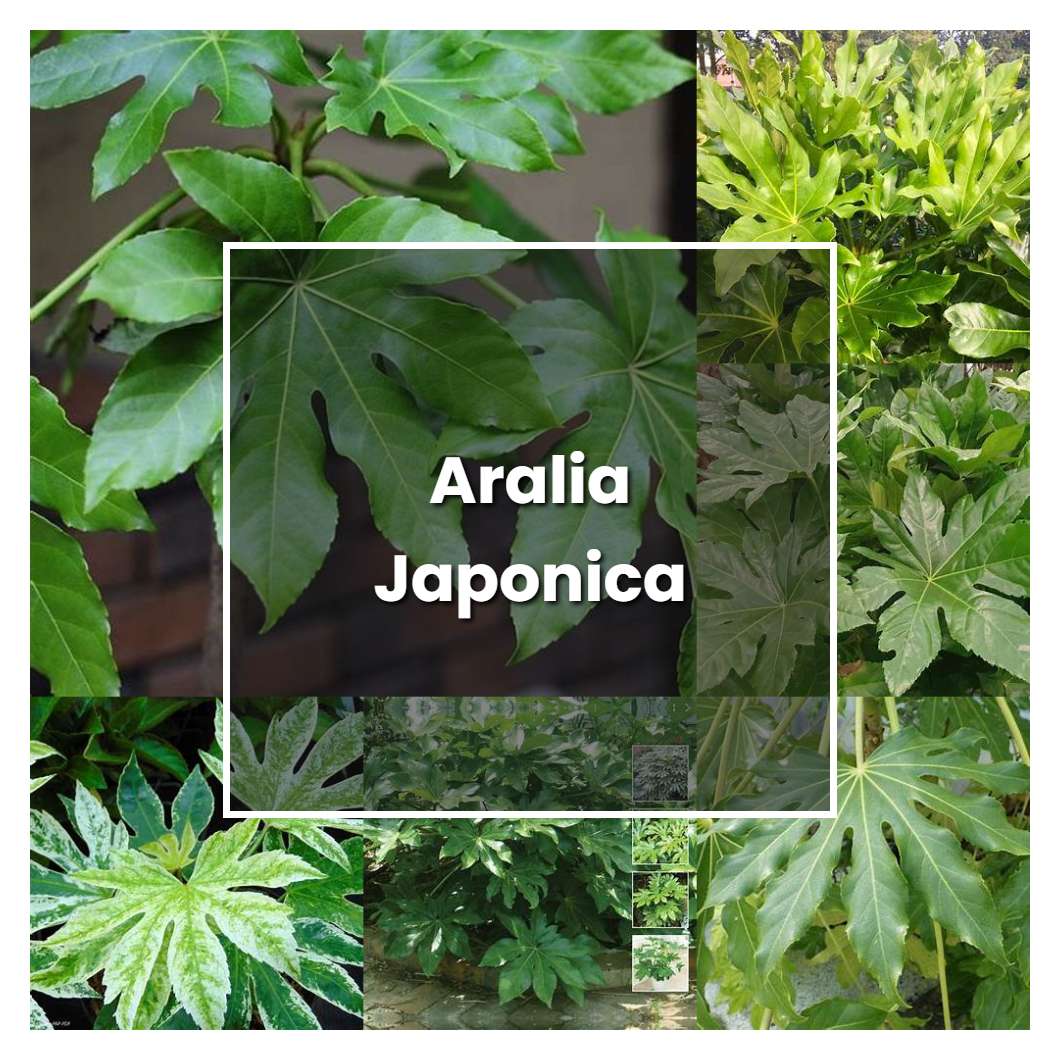Aralia japonica is a species of flowering plant in the family Araliaceae, native to eastern Asia, in Japan, Korea and China. It is a herbaceous perennial growing to 13 m tall, with large, glossy, compound leaves with 725 leaflets. The flowers are small and greenish-white, borne in umbrella-like clusters in summer, followed by black berries.

Related plant:
Aralia Elata
About soil conditions, Aralia japonica prefers humus-rich, moist soils, but it is also quite tolerant of less ideal conditions, including urban environments. It can even withstand periods of drought once established. This hardy plant does best in partial to full sun, but it will also tolerate some shade.
Just like other members of the Aralia family, the Japanese Aralia does well in bright, indirect sunlight but can also tolerate some shade. It's a good idea to provide some shelter from the hottest rays of the day, especially during the summer. Too much sun can cause the leaves to scorch.
The temperature condition that aralia japonica plants prefer is around 18 to 22 degrees Celsius. They can tolerate a range of temperatures, but for optimal growth, these are the ideal conditions. If the temperature dips too low, the plant will become dormant and will not grow. If the temperature gets too high, the plant will start to wilt and the leaves will begin to drop off.
Ideal humidity condition for this plant is around 50%. If the humidity is too low, the leaves will start to turn brown and curl up. If the humidity is too high, the leaves will start to turn yellow and drop off.
About fertilizer, usually the plant does not need too much. In general, we recommend using organic fertilizer because it is more effective and environmentally friendly. However, if you want to use chemical fertilizer, you can use it once a month or so. For the root, it is recommended to cut the root every few years to ensure that the plant grows well.
Pruning can help to encourage new growth and maintain the shape of your aralia japonica. Pruning also helps to remove any dead or damaged branches. When pruning, be sure to use sharp, clean pruning shears. Make sure to make your cuts at a 45-degree angle, and avoid cutting too close to the main stem of the plant.
Propagation of Aralia japonica is often done through root cuttings taken from young plants in late winter before new growth begins. Cuttings should be 4-6 inches long and taken from healthy, non-flowering stems. The bottom half of the cutting should be buried in moist soil mix and placed in a bright, indirect light location. Keep the soil moist but not soggy and within a few weeks, new growth should appear. Once new growth is present, fertilize every other week with a half-strength all-purpose fertilizer.
Usually, the plant growth rate in the 1 to 2 foot range per year. The plant can grow in full sun to partial shade, and prefers moist, well-drained soil. It can be difficult to keep the leaves from scorching in full sun, so partial shade is often ideal. The plant is tolerant of a wide range of soil types, including clay. Aralia japonica is a deciduous plant, meaning it will lose its leaves in winter.
Common problems for this kind of plant plants are over-watering, under-watering, and root rot. Over-watering can cause the leaves to yellow and drop off, while under-watering will cause the leaves to wilt and the plant to become stunted. Root rot is a fungal disease that can kill the plant.
Source:
Managing Pests in Gardens: Trees and Shrubs: AraliaUC IPM - ucanr.edu
Spider's Web Japanese Aralia - Fatsia japonica 'Spider's Web '
Tree Ivy, Japanese Aralia - Texas A&M University
